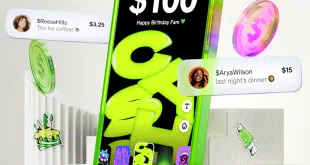With the announcement on Monday by DeviceFidelity Inc. that it has developed a case for Apple Inc.’s iPhone that will let the popular smart phone accept a memory card, the payments industry took what some observers consider a key step toward the commercialization of near-field communication (NFC), the interactive technology that lets mobile phones hold e-wallets and perform contactless point-of-sale transactions.
Trials for the new iPhone case, which will incorporate DeviceFidelity’s NFC-enabled micro Secure Digital (SD) cards, will start by June 30, the company said. By harnessing the iPhone, NFC backers hope to popularize the contactless-payment technology for handsets after years of stalemate between mobile network operators and card networks. “The more than 200,000 apps on the App Store are an integral part of iPhone users’ lives,” said Amitaabh Malhotra, chief operating officer at DeviceFidelity. “We want to give both iPhone users and app developers even more, by putting the convenience of interactive secure mobile transactions right at their fingertips.”
Based in Richardson, Texas, DeviceFidelity in February announced it is working with Visa Inc. to incorporate Visa’s payWave contactless platform in its SD cards. But while an estimated 60% of handsets have slots that can accommodate memory cards, the iPhone does not. Yet Apple’s handset has proven to be wildly popular with consumers. From a standing start in 2007, Apple is now the world’s third-largest producer of smart phones, with a 16% market share, according to IDC Worldwide. Shipments of the iPhone reached 8.75 million in the first quarter, compared with 3.79 million in the first quarter of 2009, Apple says.
DeviceFidelity, along with rival startup Tyfone Inc., produces SD cards capable of holding e-wallets as well as the chip and antenna necessary to transmit payment information to POS readers. With Monday’s announcement, the iPhone could now make NFC a leading application for memory cards, which up to now most consumers have used to store digital content like photos. “We’re excited to move something forward [on NFC],” says Dave Wentker, head of mobile contactless at Visa.
DeviceFidelity’s case uses a connection to the broad electrical port at the bottom of the iPhone to communicate with the device. The NFC memory card slips into a slot in the case.
The iPhone announcement also underscores how the rivalry to bring NFC to handsets through the portable medium of SD cards has heated up. One month after the announcement of the DeviceFidelity-Visa tie-up, Portland, Ore.-based Tyfone said it will supply micro SD cards for NFC projects planned by First Data Corp. Up to now, the processor has relied on so-called stickers, small adhesive tags that stick to the outer shell of the phone, to enable contactless payments from mobile phones.
Companies like DeviceFidelity and Tyfone are eager to commercialize NFC, reflecting the frustration of many backers of the technology over a seemingly endless series of trials around the world. “We’re working with partners like First Data to figure out trials that scale as opposed to trials that stay trials,” Siva Narendra, Tyfone’s chief technology officer, told Digital Transactions for a story on NFC scheduled to appear in the magazine’s June issue.
With its new case for the iPhone, DeviceFidelity may have found one of the keys for that commercial launch. “I’m sure their phone is going to be ringing off the hook,” says Visa’s Wentker.





